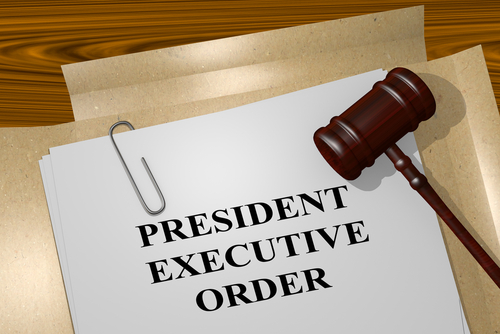Last month, President Joe Biden issued an Executive Order that seeks to both seize the potential for artificial intelligence (AI) and manage its risks. The Order has a broad reach that will affect the use of AI in education, health care, and government. Additionally, this Order will impact AI’s effect on consumers.
The Order further acknowledges that AI promises American workers improved productivity but also creates the risk of increased workplace surveillance, bias, and job displacement. The Biden administration is therefore directing the Department of Labor (DOL) to do the following:
- Develop principles and best practices to mitigate the harms and maximize the benefits of AI for workers by addressing job displacement, labor standards, workplace equity, health and safety, and data collection. These principles and best practices will benefit workers by providing guidance to prevent employers from undercompensating workers, evaluating job applications unfairly, or impinging on workers’ ability to organize. The Order requires these principles and best practices to address:
- Job displacement risks and career opportunities related to AI, including effects on job skills and evaluation of applicants and workers;
- Labor standards and job quality, including issues related to the equity, protected activity, compensation, health, and safety implications of AI in the workplace; and
- Implications for employers’ AI-related collection and use of workers’ data, including transparency, engagement, management, and activity protected under worker protection laws.
- Produce a report within 180 days on AI’s potential labor market impacts and the study and identification of options for strengthening federal support for workers facing labor disruptions, including from AI.
It’s unclear at this time what the DOL will do specifically in response to these mandates. But employers should be prepared for increased scrutiny if they use AI. As a general principle, employers should avoid completely turning over certain functions to AI. While AI will streamline these areas that are sometimes burdensome for employers, overly relying on it creates the potential for oversight of legal obligations to employees.
AI and the Hiring Process
With respect to hiring, AI creates the risk that candidates of a certain race, gender, age, or other protected group will be disproportionately impacted, leading to possible claims of disparate impact under Title VII of the Civil Rights Act of 1964 or other state and federal laws against workplace discrimination. Employers that use AI in hiring should be limiting its overall use and consider restricting AI to evaluating objective applicant or hiring criteria such as minimum educational or experience requirements. Even then, employers should strongly consider tracking the demographics of their candidates and hires to ensure there’s no disparate impact. Employers should also implement systems to ensure the hiring process at least in part relies on criteria that aren’t a product of AI.
Using AI to Analyze Performance and Productivity
Using AI to analyze worker performance and productivity will also pose the risk of certain groups’ being unfairly scrutinized in addition to potentially creating flaws in compensating employees fairly. State and federal wage and hour laws make it critical for employers to appropriately classify their employees and pay them accordingly. As with hiring, while AI will streamline evaluation and payroll processes, employers should consider using additional resources, including, but not limited to, human review and general oversight, to ensure employees are compensated fairly and accurately. Well-documented policies and procedures regarding compensation are important to minimize the unintended impacts of AI use.
Monitoring Employees with AI
Using AI to monitor employees will also come with scrutiny from state and federal agencies such as the National Labor Relations Board, as such monitoring comes with the risk of employers’ interfering with employees’ protected concerted activity. Employers’ monitoring of their workforce will likely be limited under the DOL guidance, and such monitoring should focus narrowly on productivity and performance. Employers should avoid monitoring communications between employees under almost any circumstance.
The Executive Order’s specific mandates are still unclear, but employers should be proactive and start considering what will be required of them when the guidance is rolled out, likely at the beginning of 2024. As with all new developments in labor and employment law, managers and HR professionals would be wise to consult an attorney to navigate these new and evolving requirements.
Michael Luchsinger is a shareholder at Segal McCambridge. He may be reached at mluchsinger@smsm.com.
Geoffrey Leskie is a shareholder at Segal McCambridge. He may be reached at gleskie@smsm.com.

